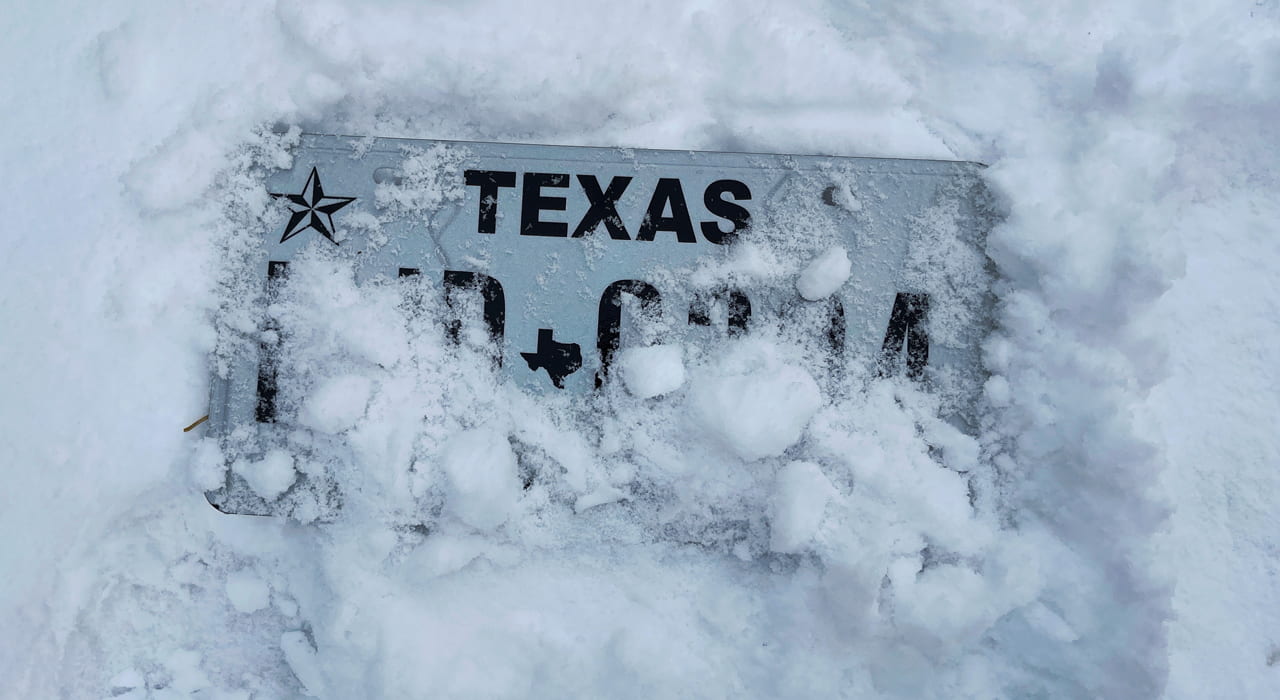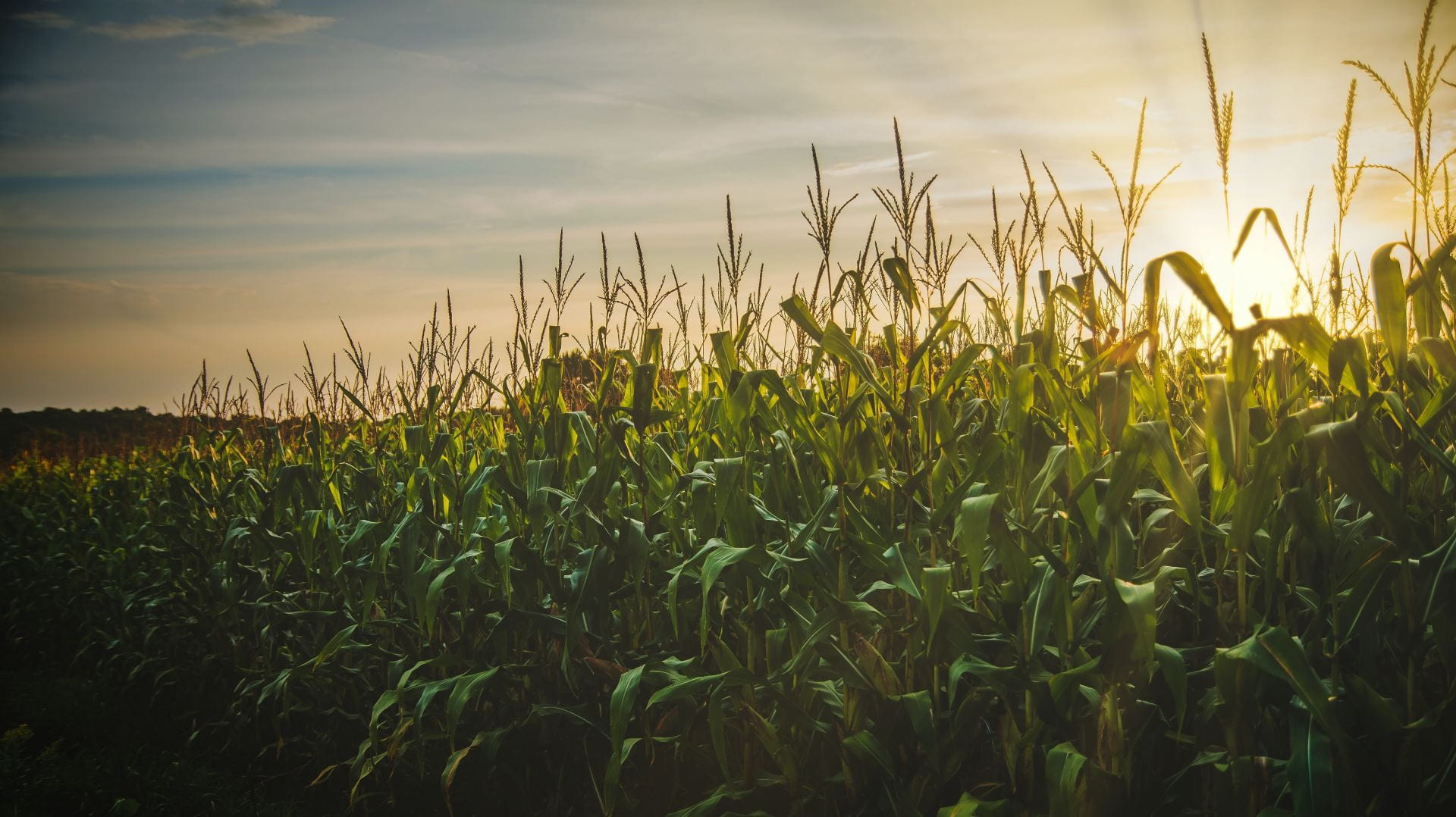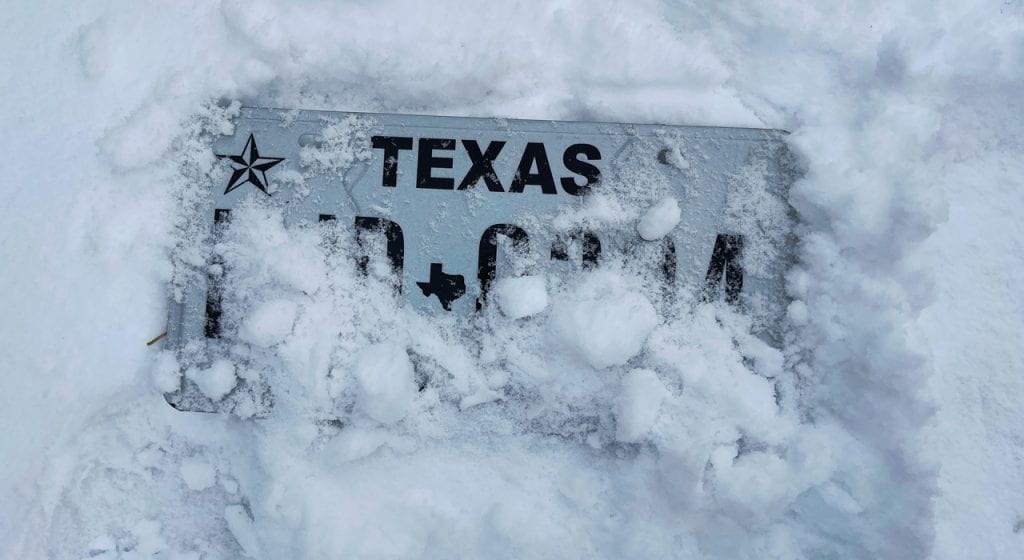With 38 public universities and 35 private colleges and universities in the state and many more across the country (and the world) interested in Texas, there’s a great deal of academic scholarship focused on water in the Lone Star State. In this column, I provide brief summaries to several recent academic publications on water in Texas.

Let’s start thinking about water!
Winter storm Uri and temporary drought relief in the western climate divisions of Texas

Photo by Marouane (source).
While winter storm Uri was a horrific event (that we [and your children] will be paying for over decades), there are, it seems, some upsides. Veettil and others show that Uri decreased drought conditions in the Texas High Plains and Trans-Pecos Texas. Heading into Uri, Texas was experiencing a drought. Uri’s precipitation (albeit sleet, snow, and graupel) increased soil moisture (a good thing) but lowered values for the normalized difference vegetation index (a bad thing). While soil moisture ended up in a better place, there was still at least $600 million in losses to crops and livestock from the storm. On the other hand, the freezing temperatures acted as an insecticide and, for the High Plains, decreased drought conditions and saved the winter wheat crop. During Uri, as the snows melted, soil moisture increased in the root zone to 30 millimeters in most central and east Texas counties.
Citation
Veettil, A.V., Fares, A., and Awal, R., 2022, Winter storm Uri and temporary drought relief in the western climate divisions of Texas: Science of the Total Environment, 835, 11 p. http://dx.doi.org/10.1016/j.scitotenv.2022.155336
Assessing the impacts of projected climate changes on maize (Zea mays) productivity using crop models and climate scenario simulation

Photo by Todd Trapani (source).
Continuing with an accidental theme here: While climate change will challenge us in many ways, it’s not all sour grapes. Plants “breathe” carbon dioxide, so more of it is a good thing from a plant’s perspective, in that it promotes greater plant growth and greater productivity. With melting glaciers and warming temperatures, there’s more water in the water cycle. If you and your plants happen to be in an area where the climate is getting wetter, you (and your plants) might welcome the change.
Along those lines, Yang and others investigated how projected climate change (using Representative Concentration Pathway 8.5 at 2041–2065) might affect dryland corn production in Burleson County. They found that the positive effects of increased carbon dioxide on plant growth offset the negative effects of increased temperatures, reduced and erratic rainfall, and reduced soil moisture. The mean precipitation productivity (produced crop per are per amount of rainfall) increased by 9.2% to 36.5% due to climate change. However, mean grain yield ranged from a 35% reduction to a 20% increase depending on the climate model.
Grumpy side note: My latest pet peeve is the use of Representative Concentration Pathway 8.5, which is the most damning pathway and is thought by almost all to be highly unlikely. Pathway 8.5 is dramatic, so it amplifies results. But it is also not realistic given the current pathway we are on today. So there’s that.
Citation
Yang, X., Menefee, D., Cui, S., and Rajan, N., 2021, Assessing the impacts of projected climate changes on maize (Zea mays) productivity using crop models and climate scenario simulation: Crop and Pasture Science, v. 72, no. 12, 17 p, https://doi.org/10.1071/CP21279
Comparative water qualities and blending in the Ogallala and Dockum Aquifers in Texas
And why not? Here’s another making-lemonade-out-of-lemons paper. As we slowly drain the Ogallala Aquifer, some folks are looking for alternative supplies in a place where there aren’t many choices. Howell notes that the deeper Dockum Aquifer is co-located with the Ogallala but often has poorer water quality. He asks the question: Could Dockum water be mixed with depleting Ogallala water to further stretch supplies from the Ogallala? To assess this, he pulled available water-quality information on the two aquifers and then modeled different amounts of mixing of the two waters for irrigation. Howell found that water quality varied considerably in the Dockum and that there is water-quality risk to irrigation no matter the blend between the two aquifers. However, a farmer could quantify and manage their risk level (and hence the blend) when irrigating, especially when facing the risk of not having enough water from the Ogallala.
Citation
Howell, N., 2021, Comparative water qualities and blending in the Ogallala and Dockum aquifers in Texas: Hydrology, v. 8, 166, https://doi.org/10.3390/hydrology8040166
Join Our Mailing List
Subscribe to Texas+Water and stay updated on the spectrum of Texas water issues including science, policy, and law.

